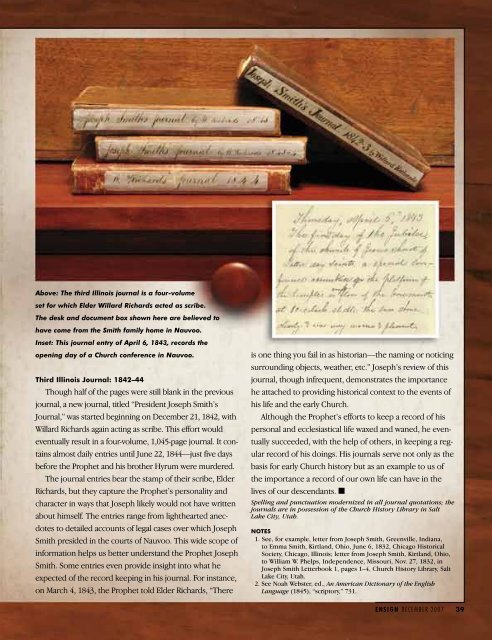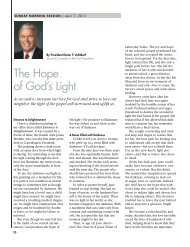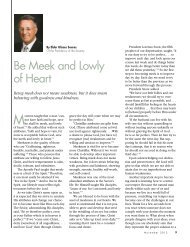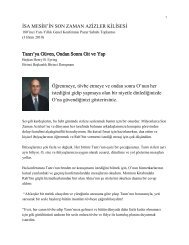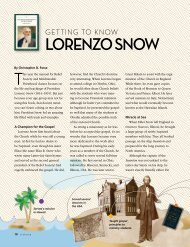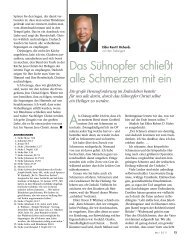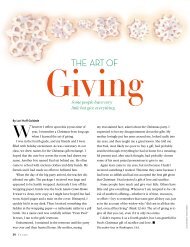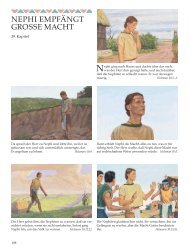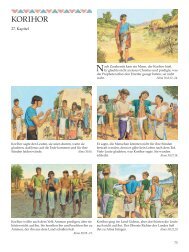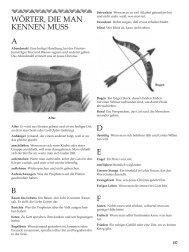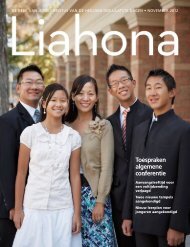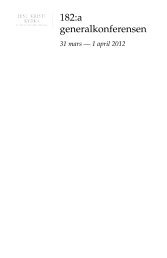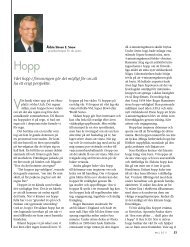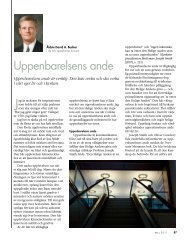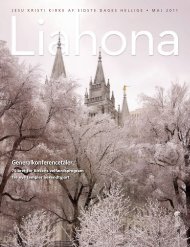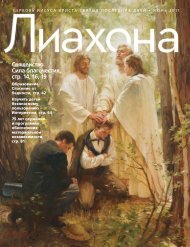December 2007 Ensign - The Church of Jesus Christ of Latter-day ...
December 2007 Ensign - The Church of Jesus Christ of Latter-day ...
December 2007 Ensign - The Church of Jesus Christ of Latter-day ...
You also want an ePaper? Increase the reach of your titles
YUMPU automatically turns print PDFs into web optimized ePapers that Google loves.
Above: <strong>The</strong> third Illinois journal is a four-volume<br />
set for which Elder Willard Richards acted as scribe.<br />
<strong>The</strong> desk and document box shown here are believed to<br />
have come from the Smith family home in Nauvoo.<br />
Inset: This journal entry <strong>of</strong> April 6, 1843, records the<br />
opening <strong>day</strong> <strong>of</strong> a <strong>Church</strong> conference in Nauvoo.<br />
Third Illinois Journal: 1842–44<br />
Though half <strong>of</strong> the pages were still blank in the previous<br />
journal, a new journal, titled “President Joseph Smith’s<br />
Journal,” was started beginning on <strong>December</strong> 21, 1842, with<br />
Willard Richards again acting as scribe. This effort would<br />
eventually result in a four-volume, 1,045-page journal. It contains<br />
almost daily entries until June 22, 1844—just five <strong>day</strong>s<br />
before the Prophet and his brother Hyrum were murdered.<br />
<strong>The</strong> journal entries bear the stamp <strong>of</strong> their scribe, Elder<br />
Richards, but they capture the Prophet’s personality and<br />
character in ways that Joseph likely would not have written<br />
about himself. <strong>The</strong> entries range from lighthearted anecdotes<br />
to detailed accounts <strong>of</strong> legal cases over which Joseph<br />
Smith presided in the courts <strong>of</strong> Nauvoo. This wide scope <strong>of</strong><br />
information helps us better understand the Prophet Joseph<br />
Smith. Some entries even provide insight into what he<br />
expected <strong>of</strong> the record keeping in his journal. For instance,<br />
on March 4, 1843, the Prophet told Elder Richards, “<strong>The</strong>re<br />
is one thing you fail in as historian—the naming or noticing<br />
surrounding objects, weather, etc.” Joseph’s review <strong>of</strong> this<br />
journal, though infrequent, demonstrates the importance<br />
he attached to providing historical context to the events <strong>of</strong><br />
his life and the early <strong>Church</strong>.<br />
Although the Prophet’s efforts to keep a record <strong>of</strong> his<br />
personal and ecclesiastical life waxed and waned, he eventually<br />
succeeded, with the help <strong>of</strong> others, in keeping a regular<br />
record <strong>of</strong> his doings. His journals serve not only as the<br />
basis for early <strong>Church</strong> history but as an example to us <strong>of</strong><br />
the importance a record <strong>of</strong> our own life can have in the<br />
lives <strong>of</strong> our descendants. ■<br />
Spelling and punctuation modernized in all journal quotations; the<br />
journals are in possession <strong>of</strong> the <strong>Church</strong> History Library in Salt<br />
Lake City, Utah.<br />
NOTES<br />
1. See, for example, letter from Joseph Smith, Greenville, Indiana,<br />
to Emma Smith, Kirtland, Ohio, June 6, 1832, Chicago Historical<br />
Society, Chicago, Illinois; letter from Joseph Smith, Kirtland, Ohio,<br />
to William W. Phelps, Independence, Missouri, Nov. 27, 1832, in<br />
Joseph Smith Letterbook 1, pages 1–4, <strong>Church</strong> History Library, Salt<br />
Lake City, Utah.<br />
2. See Noah Webster, ed., An American Dictionary <strong>of</strong> the English<br />
Language (1845), “scriptory,” 731.<br />
ENSIGN DECEMBER <strong>2007</strong> 39


